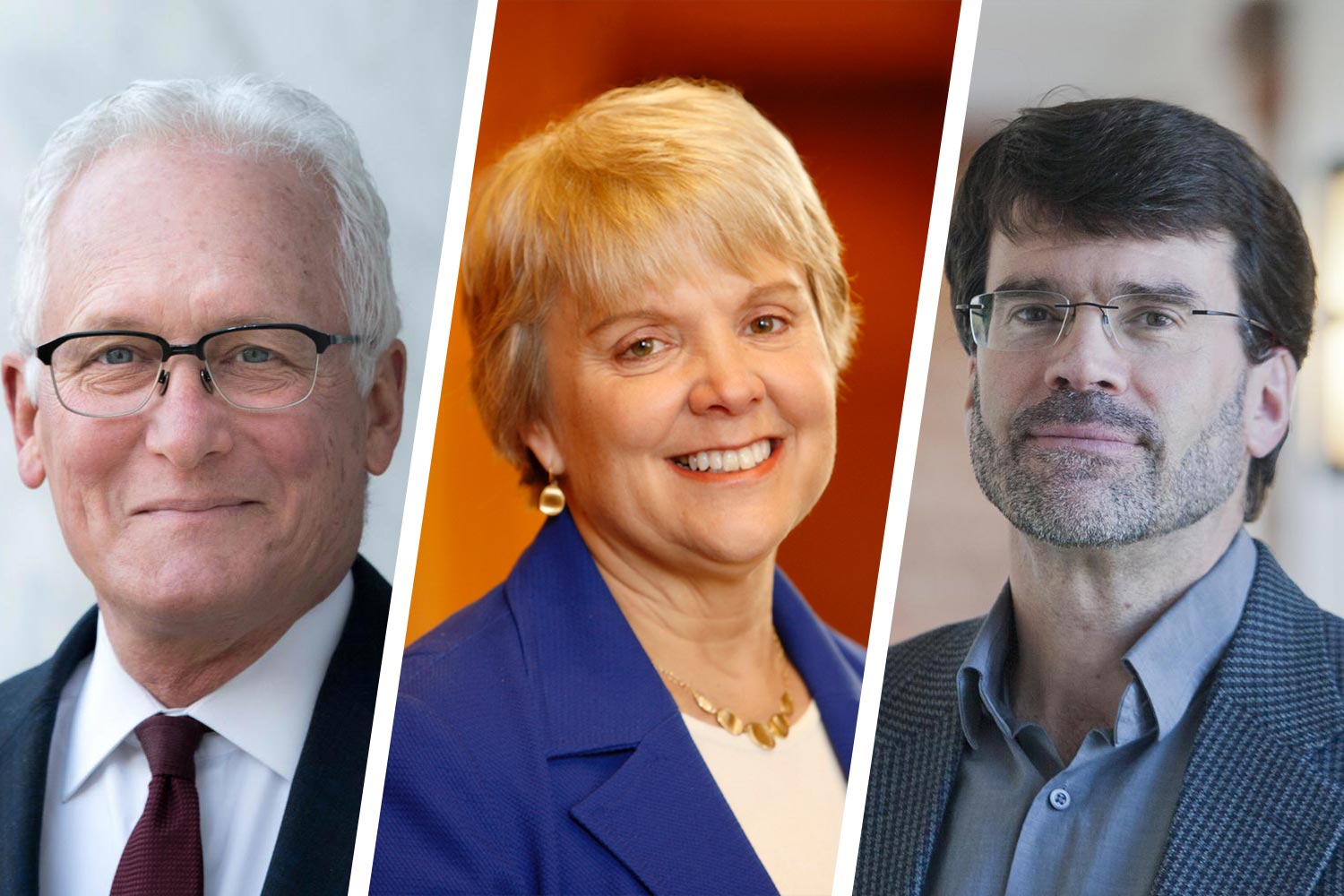We are in a grim period, but if we continue to follow public health measures and increase vaccinations, the end of the pandemic is at least in sight, according to experts interviewed Friday in a webinar hosted by the University of Virginia’s Miller Center of Public Affairs.
The webinar, “The Biden Administration Inherits the COVID-19 Crisis,” focused on the challenges President Joe Biden faces and the public health measures his administration has already rolled out over the past two days. Moderator Guian McKee, an associate professor of presidential studies at the Miller Center, began with some stark graphs showing the exponential rise of COVID-19 cases, hospitalizations and deaths in the United States around the holiday season.
In a less scientific, but more personal measure, McKee also pointed out a quick audience poll showing that 36% of Friday’s virtual audience knew someone who had died of COVID-19.
Helping McKee analyze the current national situation were panelists J. Stephen Morrison, senior vice president at the Center for Strategic and International Studies, director of its Global Health Policy Center and as of Friday, the James R. Schlesinger Distinguished Professor at the Miller Center; and Margaret Foster Riley, a professor with appointments in UVA’s schools of Law and Medicine and the Frank Batten School of Leadership and Public Policy, focusing on food and drug law, health law, animal law, bioethics, regulation of clinical research and public health law.

Friday’s panelists included, left to right, J. Stephen Morrison, Margaret Foster Riley and Guian McKee. (Contributed photos)
Together, they found reasons for both great concern and enduring optimism. Here are five takeaways from their discussion. (View the full webinar on the Miller Center’s YouTube channel.)
Vaccination Supply and the Defense Production Act
Coming into office, Biden announced a goal of vaccinating 100 million Americans in his first 100 days in office. Riley called this goal “both an ambitious plan and probably an undersell.”
“If we can meet 1 million doses a day, we will meet that goal easily,” she said. Currently, the U.S. is nearing 1 million doses per day; Riley said getting there and staying there will depend on other issues, including the Biden administration’s use of the Defense Production Act and organizations like the Federal Emergency Management Agency or the National Guard to distribute the vaccine.
Riley and Morrison spent a chunk of the hourlong webinar discussing the Defense Production Act, created in 1950 to help the U.S. deal with national security threats – including threats like a pandemic. Essentially, it allows the federal government to require private companies to prioritize the production of certain goods. Both panelists, in addition to crediting the Trump administration’s Operation Warp Speed with bringing an effective vaccine to market quickly, said that the previous administration effectively used the Defense Production Act to avoid shortages of ventilators, as one example. However, both wished it had been used to increase the production of masks, particularly scarce N-95 masks.
Now, the Biden administration has announced plans to use the act to deal with vaccine supply issues, such as glass vials, syringes and other supplies necessary for vaccine production, as well as protective gear and items necessary to make and administer COVID-19 tests.
What is less clear, Morrison said, is if the new administration will use the act to put new demands on vaccine manufacturers Moderna and Pfizer, which are currently falling short of some production targets.
Gap Between Federal, State and Local Governments
Both Morrison and Riley pointed to gaps between federal, state and local governments as a major cause of confusion and delay in the first month of America’s vaccine rollout.
“One of the biggest gaps that has existed is between the federal government and the states. We knew we had to deliver the vaccines to the states, but the infrastructure and guidance from the federal government to the states on how to actually get the vaccine into arms has been lacking,” Riley said.
The shift in administrations, Riley and Morrison said, has brought a shift toward federal authority, as Biden has signed a flurry of executive orders signaling more federal leadership in different areas of the pandemic response, including the vaccine rollout.
“This assumption of national federal responsibility marks a dramatic change from the Trump administration,” which had tended to shift those decisions to the states, Morrison said.
“We did see mayors, governors and others jump in to fill that void, with varying degrees of success and some jerry-rigged solutions,” he said, “but it’s hard to underestimate the level of confusion on the ground.”










